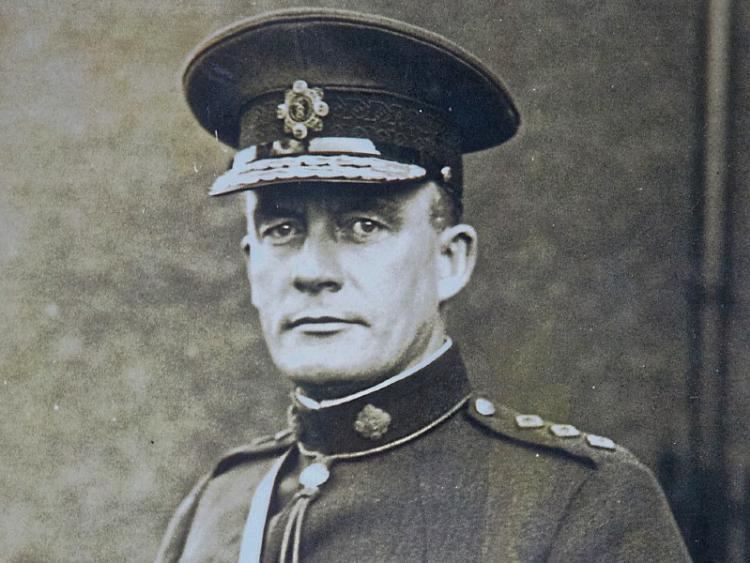Nickname(s) Ned | Name Eamon Broy | |
 | ||
Battles/wars Irish War of IndependenceIrish Civil War Other work President of Olympic Council of Ireland Died 1972, Dublin, Republic of Ireland Battles and wars Irish War of Independence, Irish Civil War | ||
Colonel Eamon "Ned" Broy (also called Edward Broy; 1887–1972) was successively a member of the Dublin Metropolitan Police, the Irish Republican Army, the National Army, and the Garda Síochána of the Irish Free State. He served as Commissioner of Gardaí from February 1933 to June 1938.
Contents

A double agent
During the Irish War of Independence (1919–21), Broy was a double agent within the Dublin Metropolitan Police (DMP), with the rank of Detective Sergeant (DS). He worked as a clerk inside G Division, the intelligence branch of the DMP. While there he copied sensitive files for IRA leader Michael Collins and passed many of these files on to Collins through Thomas Gay, the librarian at Capel Street Library. On 7 April 1919, Broy smuggled Collins into G Division's archives in Great Brunswick Street (now Pearse Street), enabling him to identify "G-Men", six of whom would be killed by the IRA. Broy supported the Anglo-Irish Treaty of 1921 and joined the National Army during the Irish Civil War, reaching the rank of Colonel. In 1925, he left the Army and joined An Garda Síochána.
Broy's elevation to the post of Commissioner came when Fianna Fáil replaced Cumann na nGaedheal as the government. Other more senior officers were passed over as being too sympathetic to the outgoing party. In 1934 Broy oversaw the creation of the "The Auxiliary Special Branch" of the Garda, formed mainly of hastily trained anti-Treaty IRA veterans, who would have been opponents of Broy in the civil war. It was nicknamed the "Broy Harriers" by Broy's opponents; a pun on the Bray Harriers athletics club, or more likely on the Bray Harriers hunt club. It was used first against the quasi-Fascist Blueshirts, and later against the diehard holdouts of the IRA, now set against former comrades. The "Broy Harriers" nickname persisted into the 1940s, though Broy himself was no longer in command, and for the bodies targeted by the unit was a highly abusive term, still applied by radical Irish republicans to the Garda Special Branch (now renamed the Special Detective Unit). The Broy Harriers engaged in several controversial fatal shootings. They shot dead a protesting farmer called Lynch in Cork, and when the matter was discussed in the Senate in 1934 the senators who supported De Valera's government walked out. They were detested by sections of the farming community. In the light of this latter history, their name is often used in reference to individuals or groups who attempt to disrupt contemporary Dissident Republicans, for example the remnants of the Provisional IRA.
Broy was President of the Olympic Council of Ireland from 1935 to 1950.
Film/Book fictionalisation
Neil Jordan's film Michael Collins (1996) inaccurately depicts Broy (played by actor Stephen Rea) as having been discovered, tortured and killed by the British. In addition, G Division was based not in Dublin Castle, as indicated in the film, but in Great Brunswick Street. Collins had a different agent in the Castle, David Neligan. Broy also mentioned and makes an appearance in Michael Russell's detective story "The City of Shadows", set partly in Dublin in the 1930s, published by HarperCollins in 2012.
